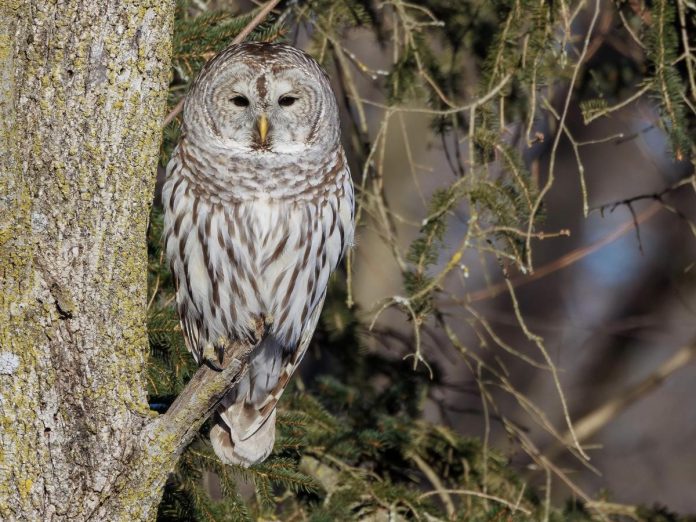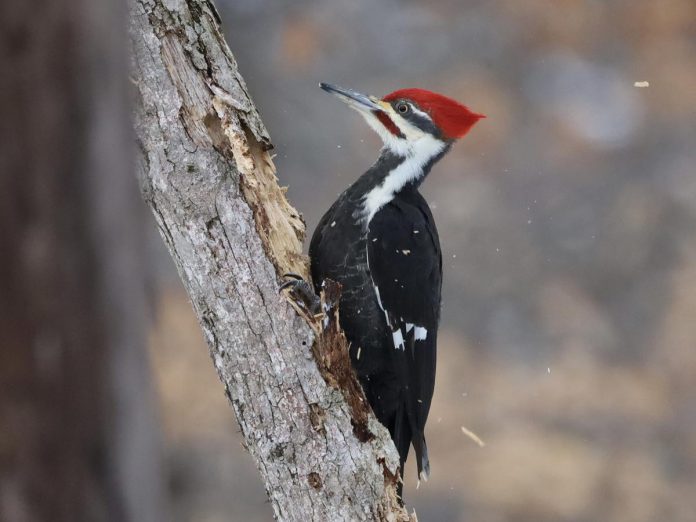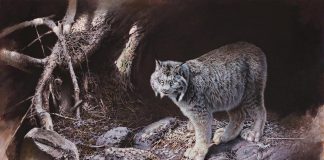
For more than a quarter century, the annual Great Backyard Bird Count has given people of all ages the chance to become citizen scientists and help researchers track changes in bird populations over time.
A joint project of the Cornell Lab of Ornithology, the National Audubon Society, and Birds Canada, the Great Backyard Bird Count returns for its 27th year in 2024, beginning on Friday, February 16th and continuing until Monday, February 19th (Family Day).
On one or more days of the annual event, volunteers from around the world will count the birds they see for at least 15 minutes and then enter their checklists on the Great Backyard Bird Count website or the eBird website, or using the Merlin Bird ID or eBird apps. For more information, visit the Great Backyard Bird Count website at birdcount.org.
“Participating in the Great Backyard Bird Count is an easy and great opportunity to bird with your friends and neighbours,” says Brooke Bateman, senior director of climate and community science at the National Audubon Society, in a media release.
“Birding with others is a great way to share in the love of birds and learn new skills. Nothing matches the spark of joy in a new birder’s face when they identify their first bird. We invite everyone from all across the globe to make this a tradition with friends and family.”
Combined with other bird counts, results from the Great Backyard Bird Count help create a clearer picture of how birds are faring, including whether individual species are are declining, increasing, or holding steady in the face of habitat loss, climate change, and other threats. Knowing where birds are seen — and not seen — is more important than ever during this El Niño year, and as weather fluctuations caused by climate change influence bird movements.

Participation in the Great Backyard Bird Count continues to grow every year, with an estimated half a million people from over 200 countries participating last year and submitting checklists reporting more than 7,500 bird species.
“The Great Backyard Bird Count gets bigger every year and that’s such a positive thing,” says David Bonter, co-director of the Center for Engagement in Science and Nature at the Cornell Lab. “We would not be able to track the long-term changes in bird populations without the eyes and ears of all our enthusiastic participants. The world is changing fast, and birds often reflect the impact of environmental change first.”
As well as helping researchers track bird populations, participating in the Great Backyard Bird Count is a fun outdoor activity for the Family Day long weekend — and it’s good for you.
“It’s well established that time spent in nature is good for us,” Bonter says.
Birds have been in the news a lot during the past year, with unusual sightings including flamingos in Wyoming and first-ever sightings of a red-flanked bluetail in New Jersey, a cattle tyrant in Texas, and more. Ornithologists speculate these birds may have been blown off course by increasingly fierce storms. With the El Niño phenomenon already influencing weather this year, unusual sightings may continue.
“Strong El Niño conditions this year could bring surprises to the 2024 Great Backyard Bird Count,” says Birds Canada president and CEO Patrick Nadeau. “Temperatures are likely to be warmer which could have an effect on the timing of spring migration and influence food availability. There may be more sightings of unusual visitors wherever you’re looking for birds.”
To learn how to participate in the Great Backyard Bird Count, visit the Great Backyard Bird Count website at birdcount.org. The website also has tools and information to help both birdwatching newbies and veterans participate in the count. New this year is a map for marking local bird-counting community events, where birders can join up to help celebrate birds in their hometown.

While you can simply count the birds you see in your own backyard or in a nearby park, you could also count the birds you see while hiking, cross-country skiing, or snowshoeing (depending on conditions) at one of the conservation areas, wildlife areas, provincial parks, or trails open during the winter in the Kawarthas region.
Here are some of them:
- Birdsall Wildlife Area (1300 Birdsall Line, Otonabee-South Monaghan)
- Darling Wildlife Area (310 5 Line, Otonabee-South Monaghan)
- Fleetwood Creek Natural Area (902 Ballyduff Rd., Pontypool)
- Ganaraska Forest (10585 Cold Springs Camp Rd, Campbellcroft)
- Gannon’s Narrows Conservation Area (1762 Blackpool Rd., Selwyn)
- Harold Town Conservation Area (2611 Old Norwood Rd., Otonabee-South Monaghan)
- Jackson Creek Trail (610 Parkhill Rd. W., Peterborough)
- Kawartha Highlands Provincial Park (106 Monck St., Bancroft)
- Ken Reid Conservation Area (277 Kenrei Rd., Lindsay)
- Lakefield Trail (22 D’Eyncourt St., Lakefield)
- Mark S. Burnham Provincial Park (846 Highway 7, Peterborough)
- Miller Creek Wildlife Area (1225 7 Line, Selwyn)
- Pigeon River Headwaters Conservation Area (445 Gray Rd., Janetville)
- Presqu’ile Provincial Park (328 Presqu’ile Parkway, Brighton)
- Robert Johnston Ecoforest Trails (185 5 Line, Douro)
- Selwyn Beach Conservation Area (2251 Birch Island Rd., Selwyn)
- Silent Lake Provincial Park (1589 Silent Lake Park Rd., Bancroft)
- Squirrel Creek Conservation Area (2445 Wallace Point Rd., Otonabee-South Monaghan)
- Warsaw Caves Conservation Area (289 Caves Rd., Warsaw)
- Windy Ridge Conservation Area (998 Mt Horeb Rd., Omemee)



























